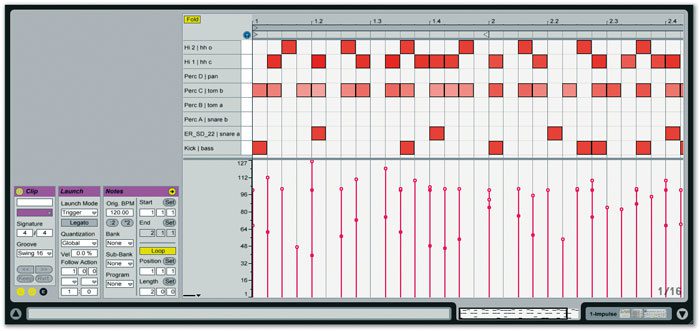Introduction
When it comes to recalling or identifying songs, melodies and harmonies often take the spotlight, leaving the heartbeat of a song in the shadows. We’re talking about the groove—the core element that holds a song together. Whether created with drum machines, live kits, or hand percussion, the rhythm is the unsung hero. Without a solid groove, most songs would crumble. So, let’s delve into the art of crafting the perfect drum groove, especially if you’re a beginner looking to make your mark in music production.
Table of Contents
Establishing the Foundation: Working With Time

The foundation of any great groove lies in time management. Drummers often emphasize the importance of working to a click or metronome, and for good reason. The initial step in building a strong groove is to establish and maintain a consistent tempo. The heartbeat of your music is derived from this core beat, and it’s crucial to stay committed to the click track. Experienced drummers may internalize the beat, but even then, referencing a click track ensures precision. Your groove should seamlessly work with or without a click track, implying rhythm even in the absence of a constant quarter note pulse.
The Art of Creating the Feel
Regardless of the genre, certain generalities hold true for most grooves. The kick stabilizes the groove, while the snare propels it forward. Understanding the dynamics between these two elements is paramount. For instance:
- Drum & Bass: Kick on beats 1 & 3½; snare on beats 2 and 4
- Dubstep: Kick on beats 1 & 3; snare on beats 2 and 4
- Funk (Swing): Kick on beats 1, 1½, 2½, and 3½; snare on beats 2 and 4
The kick and snare relationship forms the backbone of the drum section in any genre. Even without additional percussion, such as hi-hats and hand percussion, these elements carry the most weight.
Read Also: Changing Time Signatures: A Simple Guide from 6/8 to 4/4
Adding Depth: Incorporating Variety

An entirely different groove can be crafted without altering the kick and snare by focusing on the hi-hat. The level of activity in the hi-hat can transform a laid-back groove into a driving rhythm. Reserve more intricate hi-hat performances for climactic moments, enhancing the impact during intense parts of a song. Creative variations often stem from auxiliary percussion or hats, while the kick and snare maintain a consistent presence.
Translating Ideas Into Reality: Going From Your Head to the DAW
Your mental groove is typically rooted in a particular genre, or a fusion of genres. To transfer your groove from your mind to the Digital Audio Workstation (DAW), listen to drum grooves from various genres, comparing and adjusting your version to match the chosen genre’s essence. This starting point saves time and frustration, providing a solid foundation for your creative process.
Bringing It All Together: From Ideas to DAW

Every musical idea you conceive is influenced by the vast array of recorded music in your head. Exposure to diverse genres facilitates a natural flow of grooves from your mind to your fingers and eventually into your DAW. Drum grooves play a significant role even before you start a new track. The more genres you explore, the more seamlessly your grooves will transition from your thoughts to your creative workspace.
Pro Tips and Tools: Putting It All Together
Perfecting a drum groove requires practice, and if you’re looking for a shortcut, consider using ujam’s Virtual Drummers (acoustic) or Beatmakers (electronic). Select a preset, adjust drum grooves effortlessly with the MIDI Drag & Drop feature, and jumpstart your creative process. Utilize the Micro Timing Bar for subtle rhythmic adjustments, enhancing the energy of your drum part. Whether you’re into acoustic or electronic beats, ujam’s tools provide a solid foundation for your creative journey.
Conclusion
Crafting the perfect drum groove is an art that evolves with practice, genre exploration, and the right tools. Don’t be discouraged if your initial attempts don’t yield the desired results. Keep experimenting, genre-splice with confidence, and trust your ears—after all, the ultimate guide is whether it sounds good to you. For a more detailed virtual drum tutorial, explore ujam’s video guide. The journey to mastering drum grooves is ongoing, and with dedication, you’ll find your unique rhythm. Happy grooving!
SIMILAR ARTICLES: How to Do a Timpani Roll Correctly





